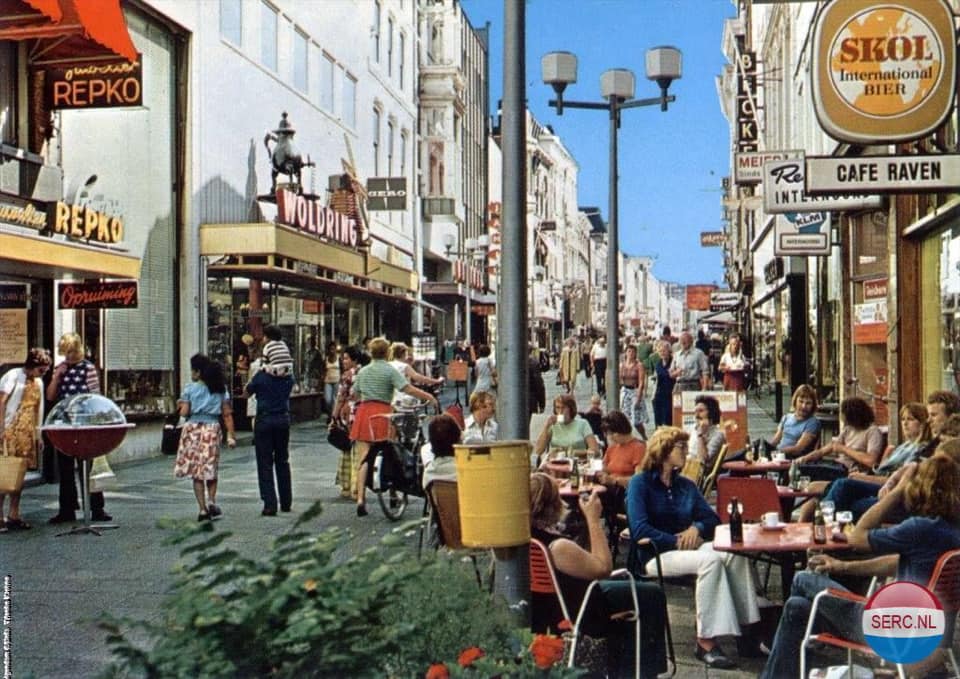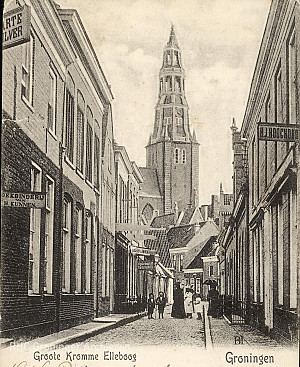The Stories Behind Groningen's Street Names
| Date: | 04 June 2020 |
| Author: | Asmo |

Groningen street names: Some are easy to pronounce (Aweg) whereas others are so long they even cause Dutchies headaches and prove nearly impossible to pronounce for internationals (Oude kijk in 't jatstraat). Although we walk these streets on a daily basis, most of us tend to forget that there is a special story behind every street name. Some streets derive their names from historical events that took place there while others are named after famous people (mostly, Dutchmen from the 19th century as this interactive map by the Geodienst shows). Knowing so little about where these names actually come from, I decided to do some research on the origins of some of Groningen’s street names on your behalf.
1. Herestraat
The Herestraat is probably best known as one of the main shopping streets in Groningen and is one of the oldest streets in the city, dating back as far as the 2nd century. Connecting the southern part of the city with the northern part, it has always been of strategic importance to Groningen as a whole. It derives its name from the fact that it used to be the street which was maintained by the ‘Landsheer’ (‘territorial lord’). At the beginning of the 20th century, the old tram used to go through here, but since then traffic has slowed down considerably on this street. In 1968, the Herestraat became the first pedestrian street in Groningen and has since become one of the busiest shopping streets in the whole country. The Herestraat is so well known that it is even featured in the Dutch version of Monopoly!

2. Oude kijk in ‘t jatstraat
The street where you can find the university’s Harmonie complex has a name that generations of international students have failed to pronounce correctly. The legend behind the origin of the name is closely tied to Groningen’s history. During the siege of Groningen in 1672 by the Bishop of Münster, the old city wall lay just beyond the Oude kijk in ‘t jatstraat . Beyond the wall was the Reitdiep, which back in the day still flowed all the way to the ocean and served a vital purpose for securing the stream of all kinds of supplies to the city. Legend has it that during the Siege, the Commander of the Groningen Defence Forces, Von Rabenhaupt, regularly went on his rounds to check the defences. Every time he came across what is now known as the Oude kijk in ‘t jatstraat the guard would yell to him “Ik kiek nog in ’t Jat!” signalling that he is “still watching the river”.
3. Oude Boteringestraat (also see Gelkingestraat and Oude Ebbingestraat)
If you are heading from the Grote Markt towards the Academy Building or the UB, you will come across the Oude Boteringestraat. Like many other streets around the Grote Markt (e.g. Gelkingestraat or Oude Ebbingestraat) the street derives its name from a line of old Drent nobility. The streets where these noble families had their residence would be named after them as they usually lived close to the Grote Markt. The oldest historical buildings in Groningen can be found in this street, with the oldest being the Calmershuis built in 1250! The oldest traces of development in this street even go back as far as the 4th century B.C making it one, if not the, longest inhabited street in Groningen. Throughout its history, the Oude Boteringestraat has been a popular address for those with money and power which can be seen by the big, mansion-like buildings built here and buildings such as the old courthouse and office of the university.
4. Peperstraat
Today, the Peperstraat is known to be the hotspot of Groningen nightlife. The name was first mentioned in 1386, and there are two possible explanations for its origin. The first theory states that the Peperstraat used to be the city's main horse market as back in the old days, merchants would use pepper as currency as it was considered very valuable at the time. The second theory does not refer to pepper as a spice, but rather to the mat-rush plant which was commonly known as ‘peper’ in the local population. According to this hypothesis, the street used to be the workplace of many weavers who made baskets etc. out of the mat-rush plant, or as they called it, ‘peper’. I will let you decide what to believe...
5. Grote Kromme Elleboog
This name is the perfect example of an insider joke taken too far. ‘Grote Kromme Elleboog’ literally translates to ‘large crooked elbow’, which makes as little sense in English as it does in Dutch. It is impossible to trace back exactly what the persons who named this street were thinking a couple of hundred years ago, but it seems as if the curved form of the street made them think of an elbow of sorts. Perhaps it is also due to the many bars located in the street that made it seem a little more ‘crooked’ to some viewers than other streets. Whatever the explanation, this street name wins 1st place for creativity!

Do you want to know what the origin of a specific Groningen street name is? Type the name of the street in the comments, and we will try our best to find out!
About the author


